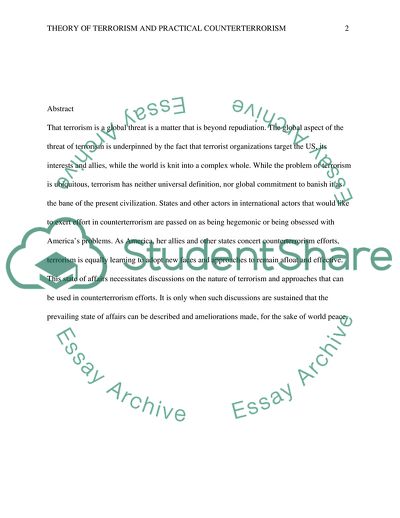Cite this document
(Theory of Terrorism and Practical Counterterrorism Research Paper, n.d.)
Theory of Terrorism and Practical Counterterrorism Research Paper. Retrieved from https://studentshare.org/military/1783353-theory-of-terrorism-and-practical-counterterrorism-activities
Theory of Terrorism and Practical Counterterrorism Research Paper. Retrieved from https://studentshare.org/military/1783353-theory-of-terrorism-and-practical-counterterrorism-activities
(Theory of Terrorism and Practical Counterterrorism Research Paper)
Theory of Terrorism and Practical Counterterrorism Research Paper. https://studentshare.org/military/1783353-theory-of-terrorism-and-practical-counterterrorism-activities.
Theory of Terrorism and Practical Counterterrorism Research Paper. https://studentshare.org/military/1783353-theory-of-terrorism-and-practical-counterterrorism-activities.
“Theory of Terrorism and Practical Counterterrorism Research Paper”. https://studentshare.org/military/1783353-theory-of-terrorism-and-practical-counterterrorism-activities.


